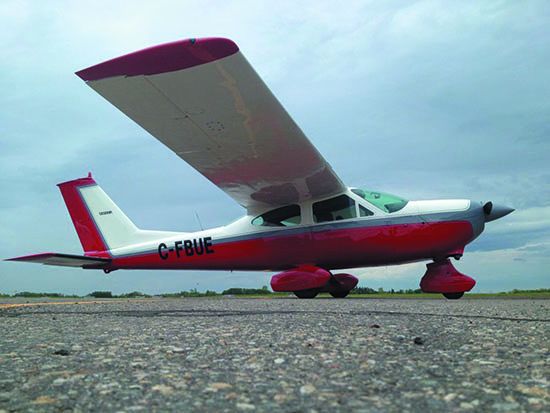Speed costs money. That’s why few airplanes coming out of the factory were optimized for speed—it costs staggering sums of money to certificate a production airplane and at some point, the engineers and bean counters threw up their hands and shouted, “That’s enough!”
While the cruel realities of squared functions when it comes to speed and drag mean that to go twice as fast you have to have eight times the power, the fact that few of our airplanes were optimized for speed means that there are some mods that let you bank some more speed without going bankrupt.
After reviewing the offerings, and digging into the files—in years past Aviation Consumer test flew a number of speed mods—we came to the conclusion that for under $10,000 an owner can increase her or his airplane’s performance measurably. We’d like to be able to say that it’s possible to get a 1 percent increase in cruise speed for every $1000 of that ten grand, but we won’t go that far—primarily because the cost of installations for the mods varies widely (and some need to be painted). Nevertheless, we think that for $10,000, invested carefully in speed mods, the cruise speed of an airplane can be increased by close to 10 knots. There should also be a measurable increase in rate of climb.
STC LIMITATIONS
We note that most mods required a Supplemental Type Certificate (STC) for certification and sale. The STC process does not include determining if there is any increase in the airplane’s performance—just that the mod doesn’t degrade the safety of the aircraft.
While we’ve been trained to think in knots, most mod shops advertise speed in miles per hour because the numbers look bigger than knots.
Performance increase is a sometime objective world, so we’ll mention whether the numbers we are dealing with are advertised or reported from the field. In addition, adding two speed mods to your airplane is not going to give you the total of the advertised numbers. The reality is that the increases are not cumulative—figure on 60 to 70 percent of the total.
While most of the speed mods we surveyed are drag reduction products, three took the route of increasing the power output of the engine(s). Although the two electronic ignition mods emphasize increased efficiency in cruise, the side effect is increased cruise speed for a given fuel burn.
We’ll go through the speed mods we reviewed in random order as we did not attempt to rank their effectiveness and most of the manufacturers target only selected aircraft models.
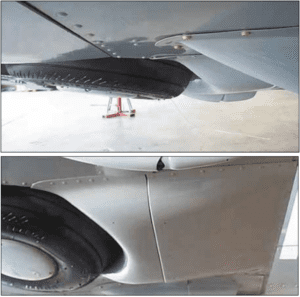
LAMINAR FLOW SYSTEMS
In the early 1980s, Robin Thomas was running an air charter business in the U.S. Virgin Islands using the built-in headwind Piper Seneca I. Working with an aerodynamicist, Thomas put together a kit to fair over the numerous exposed screws and rivets along the fuel tanks. It was successful, increasing cruise speed by 8 MPH. About that time Thomas formed Laminar Flow Systems (LFS) (www.laminarflowsystems.com) to develop and market speed mods. The team went on to create flap and aileron gap seals, flap hinge fairings and wheel well fairings.
In 1983 Aviation Consumer went to St. Thomas and flew an LFS-modified Seneca II versus a stock model. We reported a cruise speed increase of 15 knots and 200 FPM increase in rate of climb.
A year later we went back and flew an LFS-modified Lance. The results were a speed increase of between 10 and 13 knots, depending on power setting, with the increase increasing with altitude.
One more year went by and we tested a modified Cherokee 140 with all the wing mods plus “Fancy Pants” landing gear fairings and a tuned exhaust mod. (The exhaust mod went on to become the Power Flow Systems—more about it later.)
The Cherokee 140 showed a speed increase of more than 20 MPH, with a new cruise of 155 MPH, faster than a Cherokee Archer, on 30 less horsepower.
LFS now offers its speed mods for the Piper PA-28, -32 and -34 series aircraft (Cherokee, Lance, 6, Saratoga and Seneca).
The speed mod kits may be purchased individually, or in a complete package, for we’ll under $4,000. For the fixed-gear Pipers, the full kit includes Fancy Pants wheel fairings. LFS has developed “Speed Pants,” a more expensive and sophisticated main gear fairing that is advertised to provide an increase in 6 MPH over the stock Piper fairing and 11 MPH over bare wheels.
MAPLE LEAF AVIATION
Focused on making fixed-gear, piston Cessnas go faster, Maple Leaf Aviation (www.aircraftspeedmods.ca) emphasizes the Cessna Cardinal line. While we have not had the opportunity to fly the Maple Leaf mods, we consulted with Paul Millner, previously the head of Cardinal Flyers Online and an occasional contributor to this publication. He advised us that members of Cardinal Flyers spoke we’ll of the effectiveness of the speed mods for the Cardinal.
Chief among the Cardinal mods is a cowling cover for the 1968 177 and 1979 177A models. The forward cowling is a high drag area for those airplanes—Maple Leaf’s cowling cover more closely matches the design of the 177B model (beginning in 1970), improving airflow, rate of climb and cruise. Millner told us that CFO members who had bought and installed the $450 kit said that they are much more confident about using short strips because of the increased climb performance. Cruise speed is advertised to increase from 8 to 12 MPH.
The nosegear strut is also a high drag area for the Cessna 172, 177 and 182 series machines. Maple Leaf offers “Fancy Pants,” a fairing that fits between the top of late-model wheel pants and the bottom of the cowling. Priced at $779, a speed gain of 3-5 MPH is advertised for the 172; for the 177 and 182, it is 6-8 MPH.
Maple Leaf also determined that the main gear leg fairings on the 177 series could be improved and designed a set that is lower drag and also fairs in the brakes. They are advertised to increase speed by 3-4 MPH and are priced at $1116.
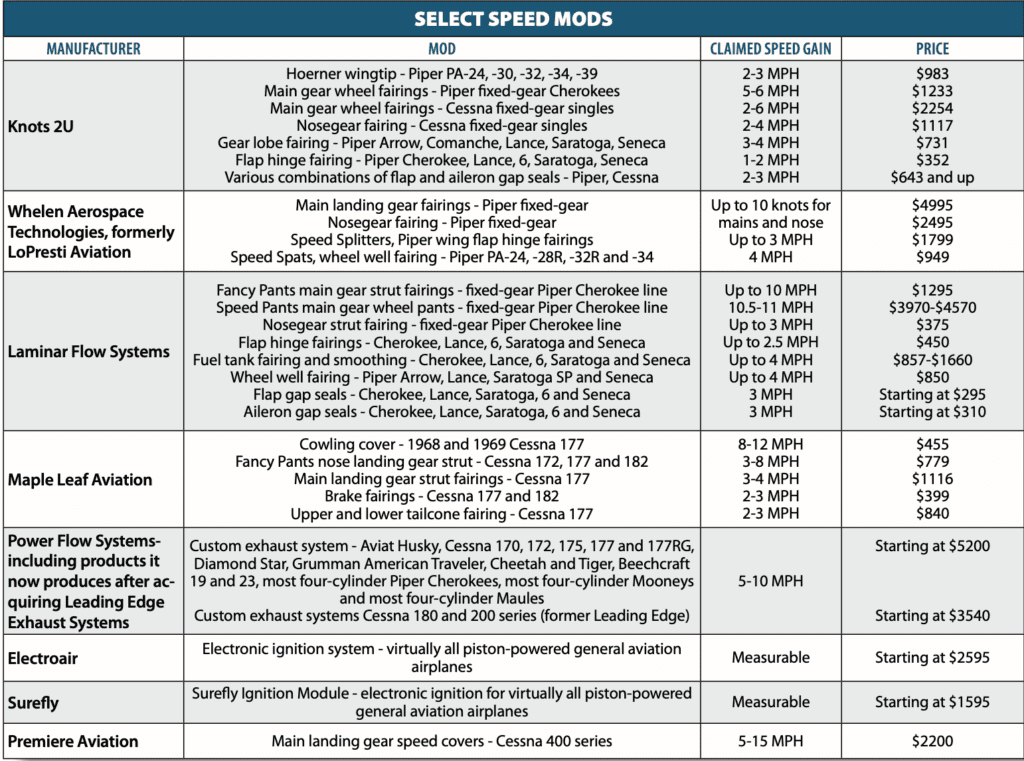
KNOTS 2U
Originally intending to make the fast, efficient Piper Twin Comanche even better, Knots 2U (www.knots2U.net) founder Jim Bradshaw used what he learned in making one some 20 MPH faster and expanded his interests to Bonanzas, Barons, and numerous Piper and Cessna singles.
Knots 2U was one of the pioneers in streamlining fixed landing gear strut and wheel fairings. For fixed-gear Piper PA-28s and 32s, it offers main gear fairings that are advertised to bump cruise speeds 5-6 MPH at a price of $1233. For fixed-gear Cessnas, the main gear fairings are priced at $2254 and advertise a speed increase of 2-6 MPH.
For $1117, Cessna nosegear fairings should notch up the speed another 2-4 MPH.
Knots 2U offers Hoerner wingtips for a variety of airplanes. Developed by Dr. Sighard Hoerner for military aircraft, his wingtips help break up wingtip vortices, reducing drag. It’s not as effective as a winglet, but operates on the same principle. They are priced at $983 and should increase cruise speed by 2-3 MPH.
Retractable Pipers suffer from a high drag area around and aft of the main gear well. For $731, Knots 2U sells a gear lobe fairing that reduces the drag and is asserted to increase speed by 3-4 MPH.
The company also sells a fairing for the draggy Piper flap hinges for $352 and claims a 2-3 MPH speed increase.
In addition, Knots 2U offers a number of combinations of aileron and flap gap seals for Pipers and Cessnas, starting at $643, that should add 2-3 MPH to cruising speed.
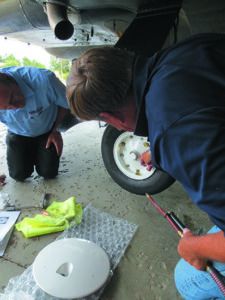
WHELEN AEROSPACE
The late Roy LoPresti became legendary for his drag-reducing and speed-increasing magic for the Grumman American and Mooney aircraft lines. Forming LoPresti Aviation, he went on to develop speed mods for Pipers, Mooneys and Grumman Americans. LoPresti Aviation was acquired by Whelen Aerospace Technologies, long known for its aeronautical lighting equipment. Whelen now sells almost all of the speed mods developed by LoPresti although most are now targeted at Piper aircraft.
As we did our survey, we noted that the high-dollar (over $16,000) LoPresti cowling mods are no longer on the website and Whelen now concentrates on speed increasing wheel pants for low wing, fixed-gear Pipers. A cruise speed increase of up to 10 knots—yes, knots—is advertised for a Cherokee 180 that has all three gear faired in. The main gear fairings are priced at $4995 for the pair, and $2495 for the nose.
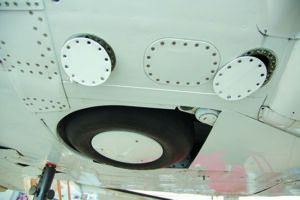
Piper flap hinge fairings—Whelen calls them ”Speed Splitters”—are offered for $1799. A 3-MPH speed increase is advertised.
To clean up the drag aft of the retracted main gear on the PA-24, -28R, -32R and -34 series, Whelen has wheel well fairings it refers to as “Speed Spats,” and are advertised to increase cruise by 4 MPH.
PREMIERE AVIATION
In 2016 we had the opportunity to do before and after flight testing of Premiere Aviation’s (www.premiere-aviation.com) Speed Covers designed for 400-series Cessnas with hydraulic landing gear. That’s the post-tip tank models, 402C, 414A, 421C, 425 and 441.
They are priced at $2200. We watched an installation take place in 30 minutes. The company claims a cruise speed increase of from 3-12 knots, rate of climb increase of 100-350 FPM, 50- to 180-mile increase in range and a 25 percent increase in single-engine rate of climb.
A speed cover looks like a slightly convex hubcap. When Cessna went to the hydraulic landing gear, it dropped the main gear doors, so there is a high drag area around the main tires, which stick out into the slipstream slightly. The speed cover actually covers a portion of the tire in addition to the wheel hub. There is an opening for the valve stem.
In our back-to-back tests of a 421C, involving a climb to FL250 and speed runs at FL250 and FL200, we observed the rate of climb with the mod to be 13 percent better than without (time to climb to FL250 was 13 percent less than the unmodified airplane). At FL250 the cruise speeds were nearly the same (with the mod, the airplane was 1 knot faster), while at FL200, the modified airplane was 6 knots faster than prior to the mod.
In our experience a 421 starts running out of puff above FL210—the rate of climb drops off significantly. During our flight test, the rate of climb of the airplane with the mod was very nearly double that of the airplane before the mod above FL210. The airplane weighed the same at takeoff for both flights and the OATs were within one degree. The same power settings, fuel flows and indicated airspeeds in the climb were used for both flights.
We did not shut down an engine during our flights, so we did not obtain single-engine rate of climb data. We did see a video of a test that supported Premiere’s claims.
We came away from those flights of the opinion that the cost, ease of installation and performance increase make the decision to purchase Speed Covers a no-brainer.
GAP SEALS
Most mod shops offer aileron and flap gap seals to block the leakage of air between the leading edge of the ailerons/flaps and the wing. Prospective buyers asked us about the benefits of gap seals and whether they would increase the flaps-extended stall speed.
When we researched the issue six years ago the conclusion we reached was multifold: First, flap gap seals did not increase the flaps-extended stall speed. Second, flap gap seals did give some improvement in rate of climb and cruise speed. Third, aileron gap seals rarely gave a measurable increase in ROC or cruise but they did dramatically improve the rate of roll—as much as 80 percent.
CONCLUSION
We generally like speed mods—and we think that the market has shaken out the ones that don’t work. We think that the improvement in performance of fixed-gear singles can be substantial—we’ve been impressed by the speed and ROC increases of the Cherokee 140 and Seneca with the Knots 2U mods and the ROC increase of an American Champion Scout with an Electroair electronic ignition.
We think that $10,000 can buy measurable speed, but advise shopping carefully (and have a shop that has performed the mod before do yours) as installation time and the need to paint a product can drive the price beyond a reasonable budget.

